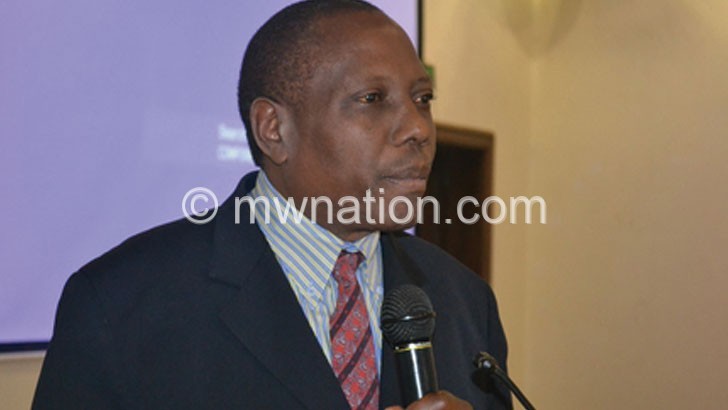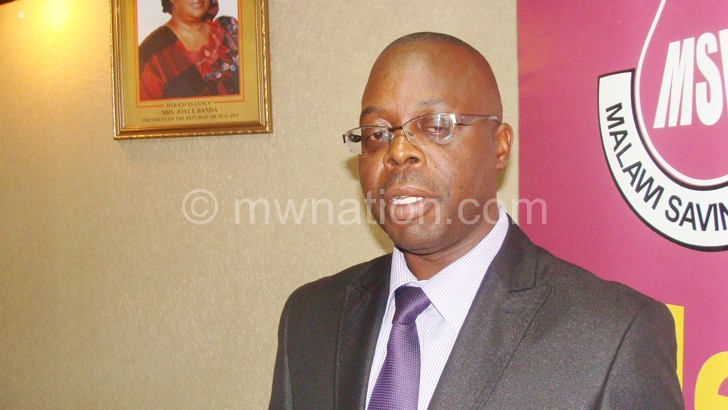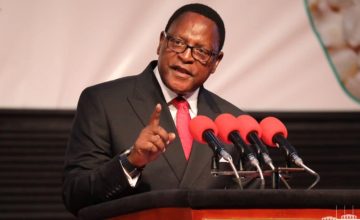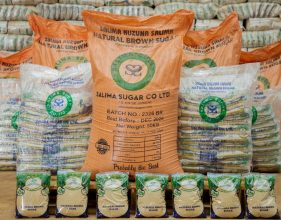Govt to borrow K687 billion this year
Government plans to borrow from bilateral and multilateral partners about $917 million (about 687 billion) in the 2016/17 financial year to finance several projects at a time when there are concerns that public debt levels could reach unsustainable levels.
The borrowing plans are contained in the 2016/17 financial statement which further outlines the country’s indebtedness pegged at $2.6 billion, including $800 million domestic debt.

But the Economics Association of Malawi (Ecama) has said much as the projects are critical, government should work on stabilising the domestic economy so that they can be financed with local resources.
Government plans to borrow $467 million to finance the Kam’mwamba Coal Fired Power plant; $205 million to be jointly financed by International Development Association (IDA) of the World Bank. It also proposes to borrow from the African Development Bank (AfDB) for the Shire Valley Irrigation project, $23.5 million from the government of India for the New Water Supply System project.
Further, according to the report, government also plans to borrow $152 million from the European Investment Bank (EIB), IDA and AfDB to finance the Lilongwe Water Resources Efficiency Programme under the Lilongwe Water Board (LWB) which is currently reeling under water shortages as a result of dry intake dams.
Recognising the backlash from such high levels of external borrowing, the 2016/17 financial statement states that most of the loans would be concessions with a grace period of 10 years in most cases.
“The average repayment period of the planned loans is twenty five years. These terms imply that the planned new borrowing will not adversely impact on the sustainability of the country’s external and public debt portfolio,” the statement indicates.

The financial statement adds that despite the increasing debt figures over the years, external debt remains sustainable over the medium to long term while domestic debt ratio of 14 percent of the gross domestic product (GDP), when the internationally acceptable threshold of 20 percent was still manageable.
But economics professor Ben Kaluwa said the government must understand that analysts are not against borrowing but what the funds are spent on.
He said: “If you use the money to improve productivity, then we will be ok. But any losses or mishandling of foreign exchange wherever it comes from pulls us down.”
Kaluwa, who teaches economics at Chancellor College, a constituent college of the University of Malawi (Unima), said the fear was that Malawi was heading towards the pre-2006 disaster levels when a $3.6 billion debt was cancelled under the Heavily Indebted Poor Countries initiative of the World Bank and International Monetary Fund (IMF) and might even surpass if external and domestic borrowing is not reigned in quickly.
He said: “While the issues have to do with the performance of the external sector—balance of payments—if we don’t really focus, the chances of us creeping back into the same problems are very high. It may not be intentional but could be for service provision, infrastructure, which is necessary and important.”
In an interview last week, Ecama executive director Edward Chilima agreed that debt was not bad if meant for development projects. However, he observed that current debt levels were not sustainable.
“Given the level of development of our country, some uses of the debt are not in line with key government priorities. Our advice is that debt should only be incurred if it is to finance investments in key priority areas only. The rest can be postponed until the economy recovers,” he said.
Like Kalua, Chilima said what was critical was to tighten financial management systems so that the debt proceeds should be put to maximum use and not to corruption.
“It is also prudent to work on stabilising the domestic economy so that it can reach a point where key projects could be financed using local revenue resource,” he said.
According to the financial statement, the external debt accounted for 69 percent of total debt while the rest was domestic debt but as a proportion of GDP, total public debt was 51 percent.
Of the external debt, the country is heavily indebted to the World Bank (specifically the International Development Association) with 33 percent of the total external debt followed by China, which the country owed a mere $47 million in 2010 but has risen to $237 million within five years.
The third highest amount of debt is owed by the government to another multilateral AfDB with $228 million representing 12.8 percent of all the external debt.
But the government feels there is a reduction in total external debt in comparison to December 2014 as well as the trend from December 2010 because of higher repayments than disbursements.






How will the youth who will be paying back these loans manage to pay back the loans if they are not empowered by the borrowing government? You let down the youth now and it will come to haunt the future very soon with the amount of loans we are busy borrowing! UNIMA fees must fall and government must show serious interest in education and this must include the private schools as well.